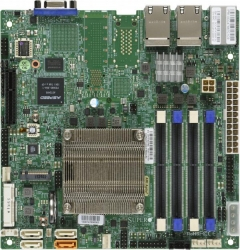Artificial Intelligence (AI) ChatGPT, Bing, Bard - part 1
| Other • NewsArtificial Intelligence (AI) ChatGPT, Bing, Bard - part 1
Introduction
In an era characterized by rapid technological advances, few innovations capture our attention as much as artificial intelligence (AI). Once a concept limited to science fiction and futuristic projections, artificial intelligence is now an integral part of our daily lives, changing the way we work, communicate and interact with the world around us.
This article provides an introductory guide to the fascinating world of artificial intelligence. We will begin by defining artificial intelligence, exploring its different types and tracing its fascinating history. We will then delve into the role and importance of artificial intelligence in our modern society, and provide a brief overview of machine learning and deep learning as the driving forces behind the development of artificial intelligence.
Whether you are an experienced technology enthusiast, a professional who wants to understand the impact of artificial intelligence on your field, or a curious mind intrigued by the progress of the digital age, this article aims to shed light on the fundamental aspects of artificial intelligence. So let's begin an exploration of a technology that, in many ways, is redefining what is possible in the 21st century.
Understanding artificial intelligence
Definition of artificial intelligence (AI) and its different types
Artificial intelligence (AI) is a branch of computer science that deals with creating systems capable of performing tasks that typically require human intelligence. These tasks include activities such as learning, reasoning, problem solving, perception and language comprehension. There are two main types of artificial intelligence: narrow artificial intelligence (Narrow AI), designed to perform specific tasks such as voice recognition, and general artificial intelligence (General AI), which can theoretically perform any intellectual task that a human can perform.
Źródło: https://deltalogix.blog/en/2023/03/08/artificial-intelligence-a-look-at-its-three-types-and-their-possible-future-implications/
A brief history of AI
The concept of AI dates back to ancient times, along with myths and stories of artificial beings endowed with intelligence or consciousness. However, the field of artificial intelligence as we know it began as an academic discipline in the mid-20th century, with the landmark Dartmouth Conference in 1956. Subsequent decades saw many ups and downs, known as "AI winters" and "AI springs," depending on the flow of funding and interest. The current resurgence, fueled by advances in machine learning, began in the early 21st century and continues today.
Źródło: https://substack.com/profile/42660574-genuine-impact/note/c-14871872
The importance and role of artificial intelligence in modern society
Nowadays, artificial intelligence is omnipresent in our daily lives, even if we don't realize it. It assists the search engines we use, the social media channels we scroll through, the voice assistants on our phones, and even the recommendation algorithms of our favorite streaming services. In addition to these consumer applications, artificial intelligence also plays an important role in areas such as medicine, where it helps diagnose diseases; in finance, where it helps detect fraudulent transactions; and in transportation, where it has paved the way for autonomous vehicles.
Źródło: https://news.cgtn.com/news/2019-06-12/Everything-you-need-to-know-about-artificial-intelligence-HswDK6aQdW/index.html
Discussion of machine learning(from machine learning) and deep learning (from deep learning), with emphasis on their role in the development of artificial intelligence.
Pod względem sztucznej inteligencji, uczenie maszynowe (ML) i głębokie uczenie (DL) to dwa podzbiory, które znacząco przyczyniły się do rozwoju tej dziedziny. Uczenie maszynowe to rodzaj sztucznej inteligencji, który daje poszczególnym systemom możliwość uczenia się i doskonalenia na podstawie doświadczeń bez konieczności ich programowania. Deep Learning, czyli podgatunek uczenia maszynowego, wykorzystuje sieci neuronowe o kilku warstwach - stąd "głębokie" - do modelowania i rozumienia złożonych wzorców w zbiorach danych. Obie te techniki odegrały kluczową rolę w opracowywaniu zaawansowanych modeli sztucznej inteligencji, takich jak ChatGPT.
Źródło: https://lawtomated.com/a-i-technical-machine-vs-deep-learning/
Related pages:
AI infrastructure: setting the stage for artificial intelligence development
To perform computationally demanding AI training and operations tasks, a robust and efficient server infrastructure is needed. One of the leading brands in this field is Supermicro, a company that is a leader in providing high-performance and efficient server technology in the artificial intelligence industry.
Supermicro's servers are optimized for AI, deep learning, high-performance computing (HPC) and generative AI applications, which include training AI models such as GPT-3 and GPT-4. The company's range of high-end servers integrate NVIDIA HGX and H100 8 PCIe-based GPU systems to provide optimal computing power and accelerate AI training and deep learning tasks. More information on the company's solutions can be found here (https://www.supermicro.com/en/solutions/ai-deep-learning).
In the ever-evolving world of artificial intelligence, Supermicro is making significant progress. According to the Seeking Alpha report (https://seekingalpha.com/article/4582438-super-micro-computer-is-central-to-the-ai-boom-and-very-undervalued), Supermicro has been instrumental in the AI boom and is considered undervalued given its key role in AI infrastructure.
In summary, the development and operation of AI models requires a powerful server infrastructure. Companies such as Supermicro are playing a key role in this regard, providing optimized servers that meet the demanding needs of AI applications.
Summary
As we described in this article, artificial intelligence is an intriguing and complex field that continues to shape our world and drive innovation across industries. From autonomous vehicles to personalized recommendation systems, artificial intelligence is increasingly integrated into our daily lives, bringing with it a range of benefits, challenges and ethical issues.
However, this is just the tip of the iceberg. In our next article, we will delve into a fascinating area of artificial intelligence - natural language processing. We will explore the groundbreaking GPT (Generative Pretrained Transformer) language models developed by OpenAI. From their humble beginnings to their latest iterations, these models are changing the way we interact with machines.
Want to learn more about how machines can write poetry, edit emails and even tutor in various subjects? Then don't miss our next article on GPT language models. You can read it here. Join us as we continue our journey into the captivating world of artificial intelligence.
Related pages:





